The BRAWL² Tournament Challenge has been announced!
It starts May 12, and ends Oct 17. Let's see what you got!
https://polycount.com/discussion/237047/the-brawl²-tournament
It starts May 12, and ends Oct 17. Let's see what you got!
https://polycount.com/discussion/237047/the-brawl²-tournament
How much would you say I've improved? (3D Gunslinger then and now)

From 2016 to early 2020, my 3D skills have remained the same, I only had about 3 weeks knowledge, so the best I could do where puppet looking things or weapons that looked like carton.
Then when the lockdowns happened and I was laid off my non-3D, outdoor based job due to it, and after 1 month of forced isolation, I began to study 3D again for the first time since 2016/2017.
I won't post everything, but as the months passed by, my technique improved, I became more efficient, and thus faster.
Until I was finally just zipping through processes I use to spend hours on in 10s of minutes.
So as an example of comparing my skill between then and now, here is a gunslinger character I had designed in 2D prior to even knowing any 3D.(the sculpt on the left was for the current model.)

And below are some comparison pics, the top is 3D model I made based off him with rudimentary 3D knowledge(3 to 4 weeks), vs the bottom, a model I made of him last month( after having studied for over a year to know as much on Blender modeling as possible).
The other models I made as well, which until recently where flawed,and I had just upgraded/retro-fitted them so they would have face rigs for mouth/eye movement, etc.) The fairy model is still unfinished.

Even back then, I was super inefficient, using high density sculpts instead of properly topologized meshes.

Even the remake of his gun is a vast improvement over the old, carton looking model, lol.

My favorite weapon to have made so far, and I used maybe 30% effort to make it while the old carton model I was using 100% and struggling to make it look good. Knowledge makes such a huge difference when it come to creating things in 3D.

Even went and made all the ammo from my notes and old concept art.

So yes, acquiring tons of knowledge is very important when it comes to 3D.
Although I was able to create a fully topologized model as soon as 10 months ago, I would hit a stumbling block where if I posed them, things would go horrrificly wrong due to bad auto-weight painting job or bad mesh.
So after the gunslinger, I had gone back to fix up some of those models, and managed to clean up the mesh(I think I deleted about 3,000 excess verts from the knight, as well as fix up bad parts of the mesh and properly weight paint it so he could actually do decent action poses now.
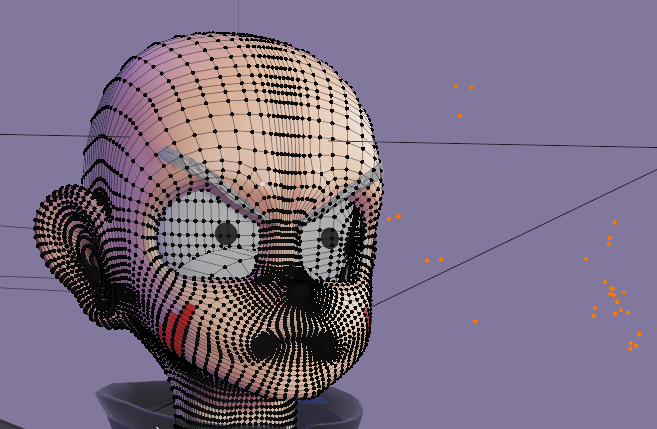
Here he is after the update, able to attack now, in the past, weird stuff would happen if I even bent his model to that extent, lol.
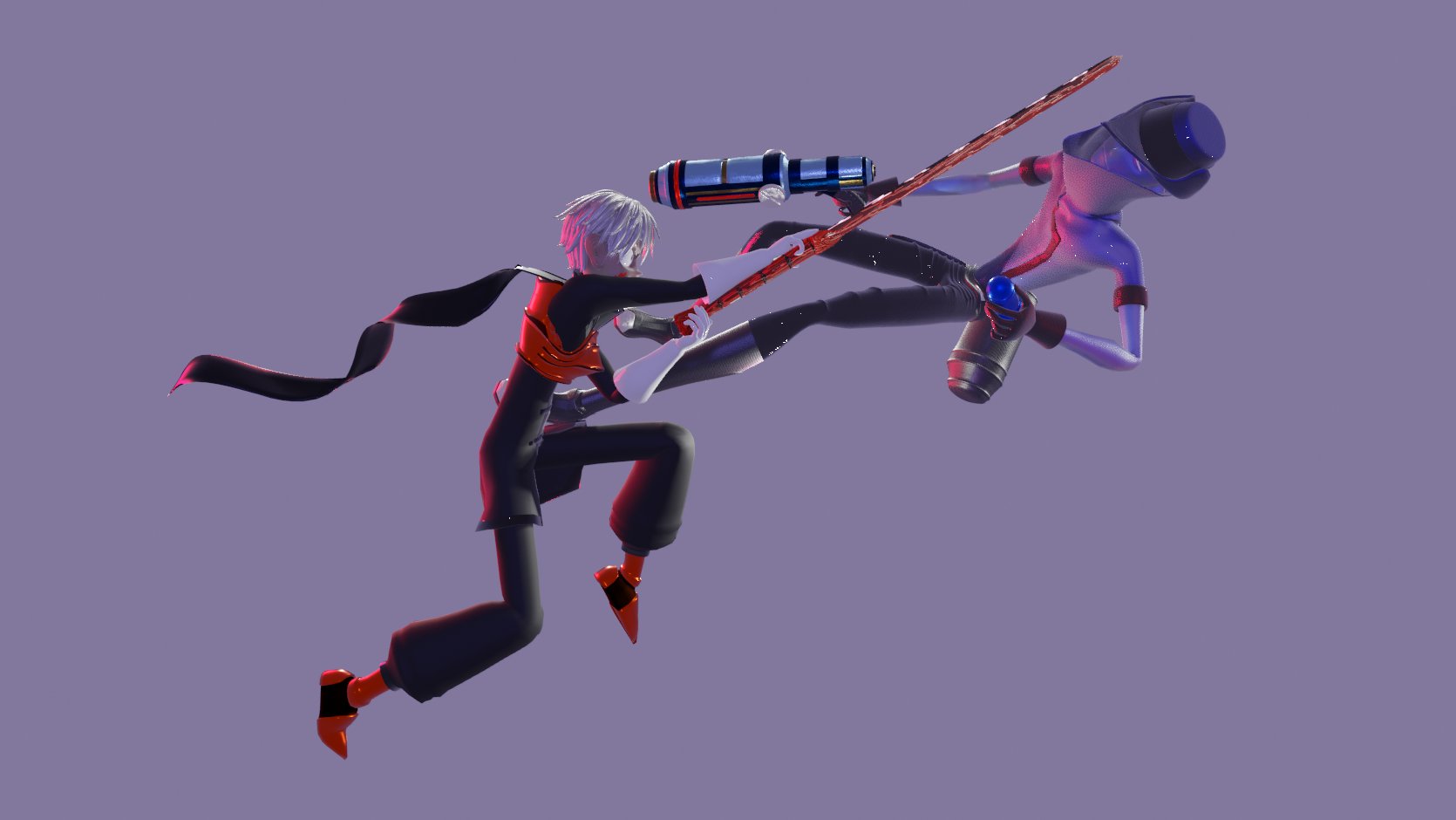
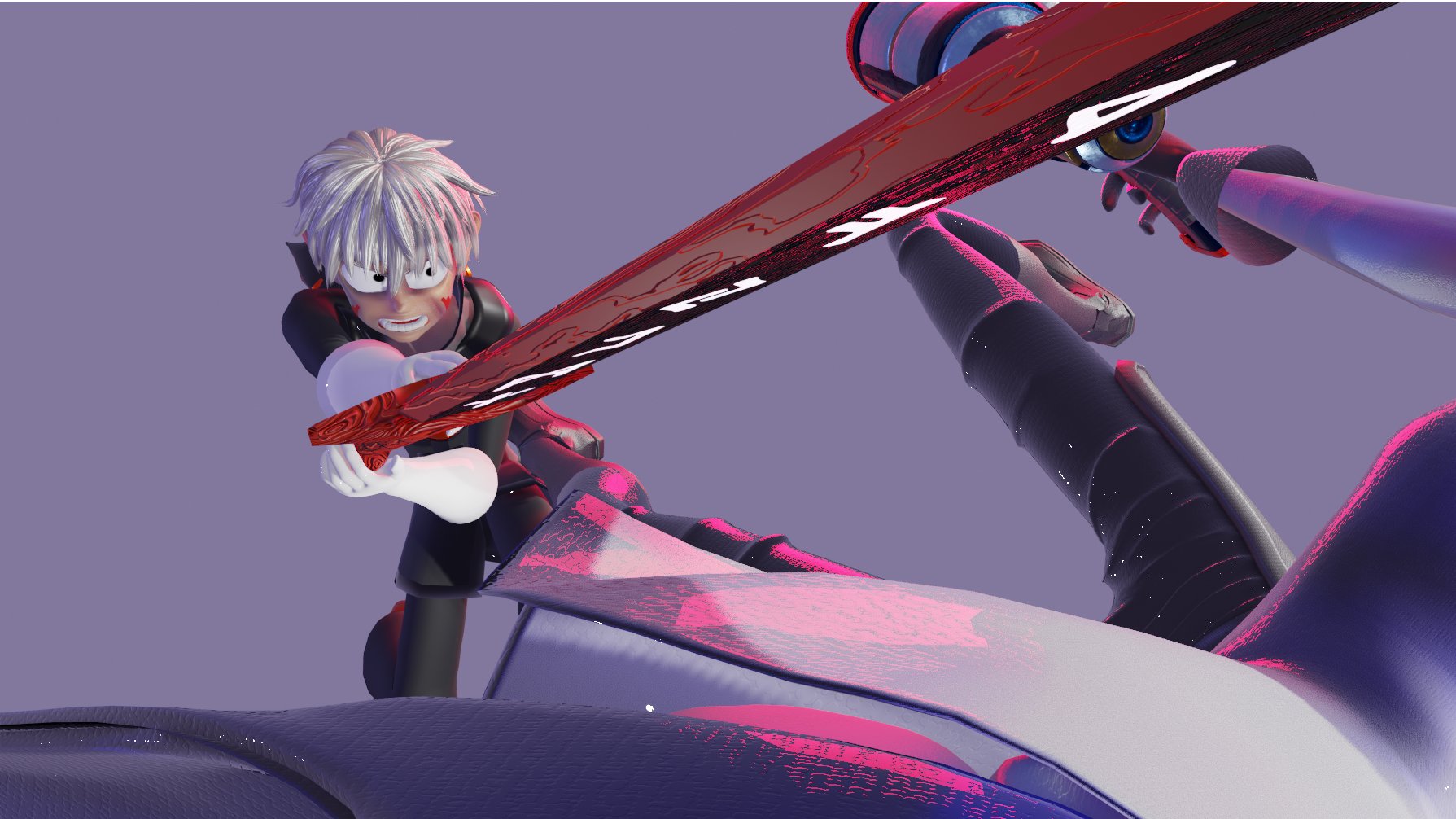
WELL, he's not fully fixed, looks like I missed a spot, you can see around his side rib area, the mesh of the armor turning into some weird shapes instead of staying as a curvature:
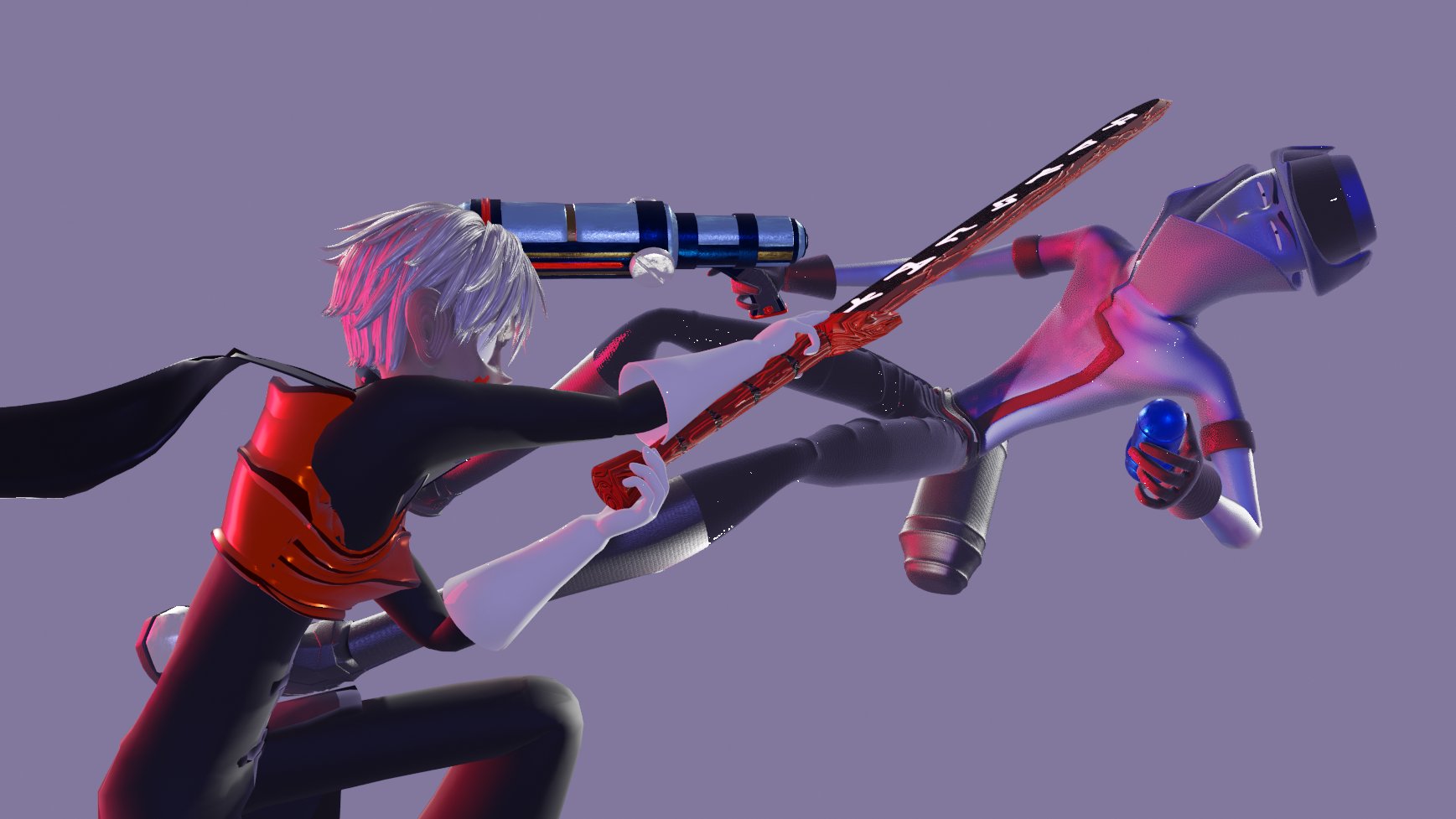
(I just noticed his gun hand is open, how the heck did I miss that.)
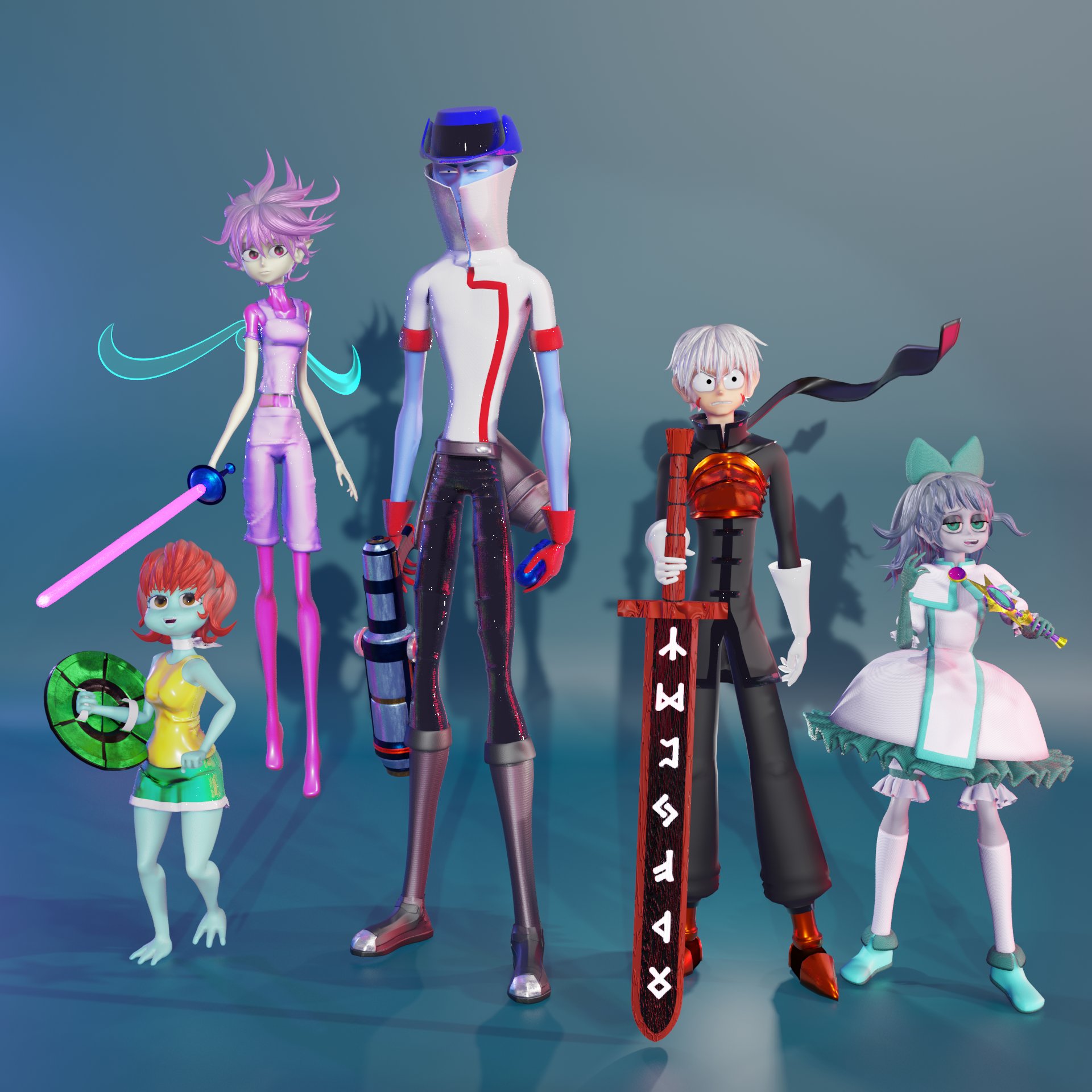
These are all my poseable models so far(not counting practice models or joke characters I've made to test my skill at certain points).
All my models are based of concept art I made from previous years, such as these three:
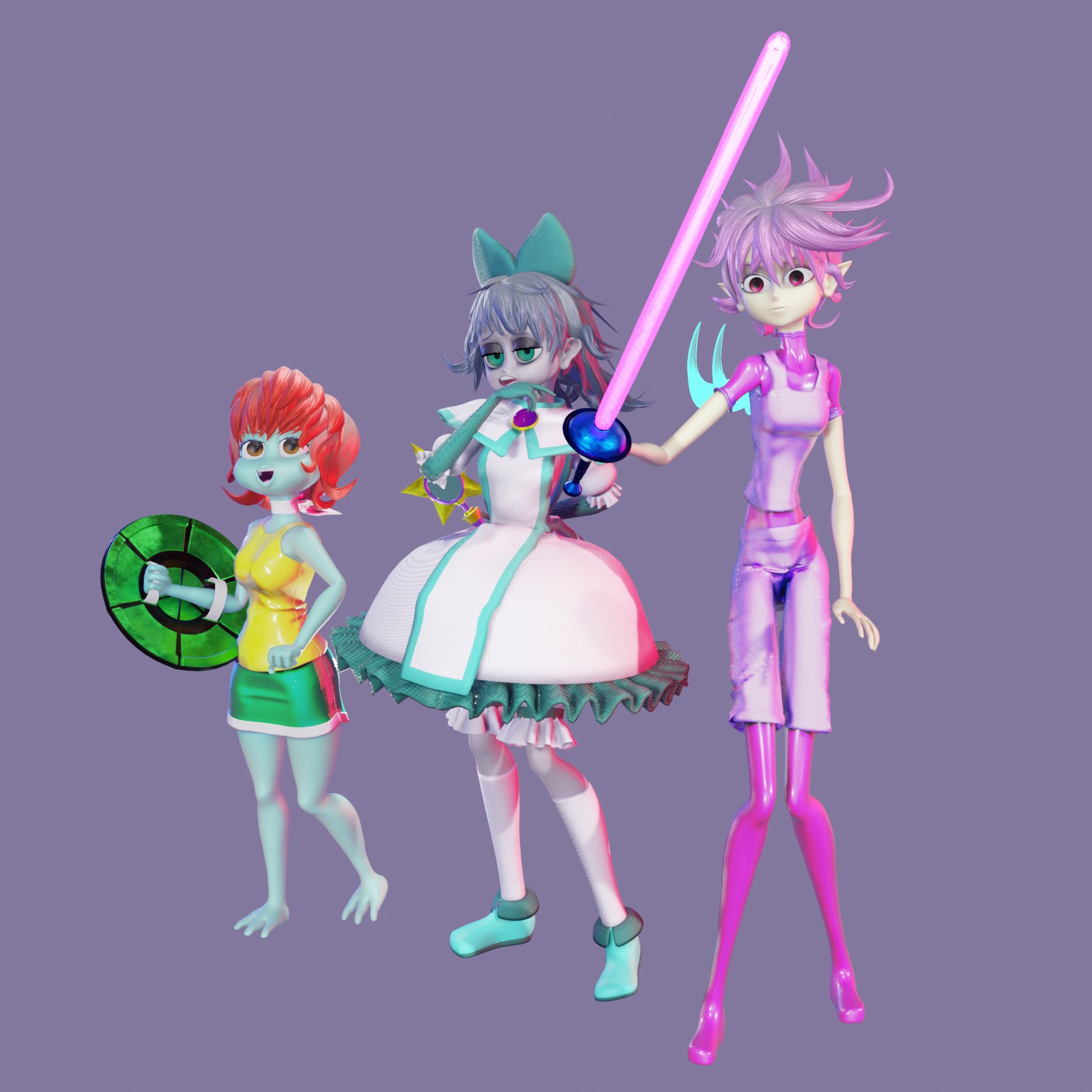
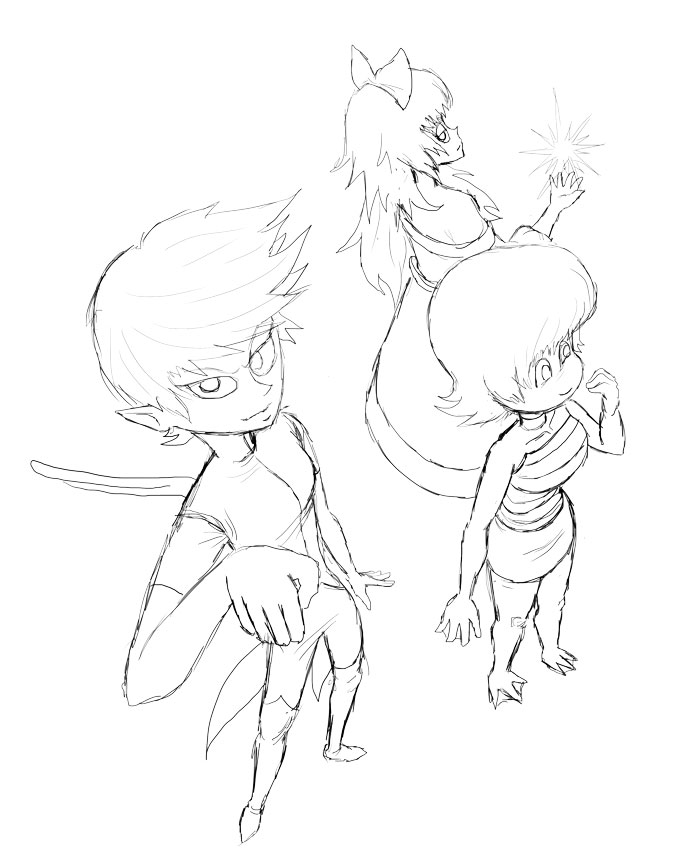
I'm aware the verts are still too high for games, although I can make game ready models with polycounts in the 1,000 to 3,000 range(or decimate these and fix them up for lower polycounts). Although the gunslinger is the 1st model that looks detailed but who's base has minimal verts to achieve this thanks to modifiers.
I think a true 3D master can make something look good while using the minimum required verts to achieve it. I see it all the time when I go on sketchfab(although a lot of it is use of normal maps and good texture painting/baking.)
I still haven't covered certain topics, I've focused most on hard surface topology actually, which is why the gun came out so well, I still need more practice in sculpting. I've gotten better at rigging and weight painting, but I could probably learn even more.
What would you recommend I learn in 3D next? Do I continue honing and perfecting what I alreayd know? At my current skill level, would I be ready to work for a company like Riot or Blizzard? Is there something I'm missing? I feel lost.
I just finished my 1st 3D gig the other day, customer was happy with the results, so that is a good sign.

Replies
Okay, I'll continue to refine my modeling skills then. : D I'm still learning new stuff, for example, the eye movement in this character is texture based(and controlled by the rig via a modifier), instead of the actual eye mesh rotating around.
Meanwhile, all the other characters have spherical eye movement based on the rotation of the mesh which is what I'd been using for months. I wouldn't say one is better than the other, but the texture based one will go well with NPR styles. The great thing about 3D is that there are so many ways to achieve something.
Yes, that is correct, my knowledge in lighting, materials, and texturing are all still wobbly, I'm somewhere between the basics and intermediate and don't feel as confident in those subjects as I do with hard surface modeling, which is my leading 3D trait right now.
I have covered things like rigging and animation as well, this dragon is an example of an animation i did from scratch(and using the Rigify rig in Blender, although I have made my own rig parts, such as for the eyes and mouth for other rigs that didn't use Rigify). I'm somewhat comfortable in them, but I'm pretty sure I'm missing various advanced techniques that would make working in those two more efficient and streamlined.
The dragon itself uses an NPR shader I learned, rather than made myself, and the scales are procedural and used in the normals rather than being the texture itself. Definitely, every aspect of 3D is so in-depth, I've gone through the process of learning things>repeating what I learn till it's stuck in my head>moving to new subject>repeating process, many, many times just to ingrain only a portion of the vast amount of information available on each subject. I can create simple materials from scratch and mix a few for interesting results, but I can't do any of the really complex stuff with say 15+ nodes or more to create really unique materials or effects, maybe once or twice I've accidentally gotten an interesting effect.
Some of these weapons that I've made is the reason I feel so confident in hard surface modeling.
Would you say I have the most potential as a hard surface modeler? 🤔